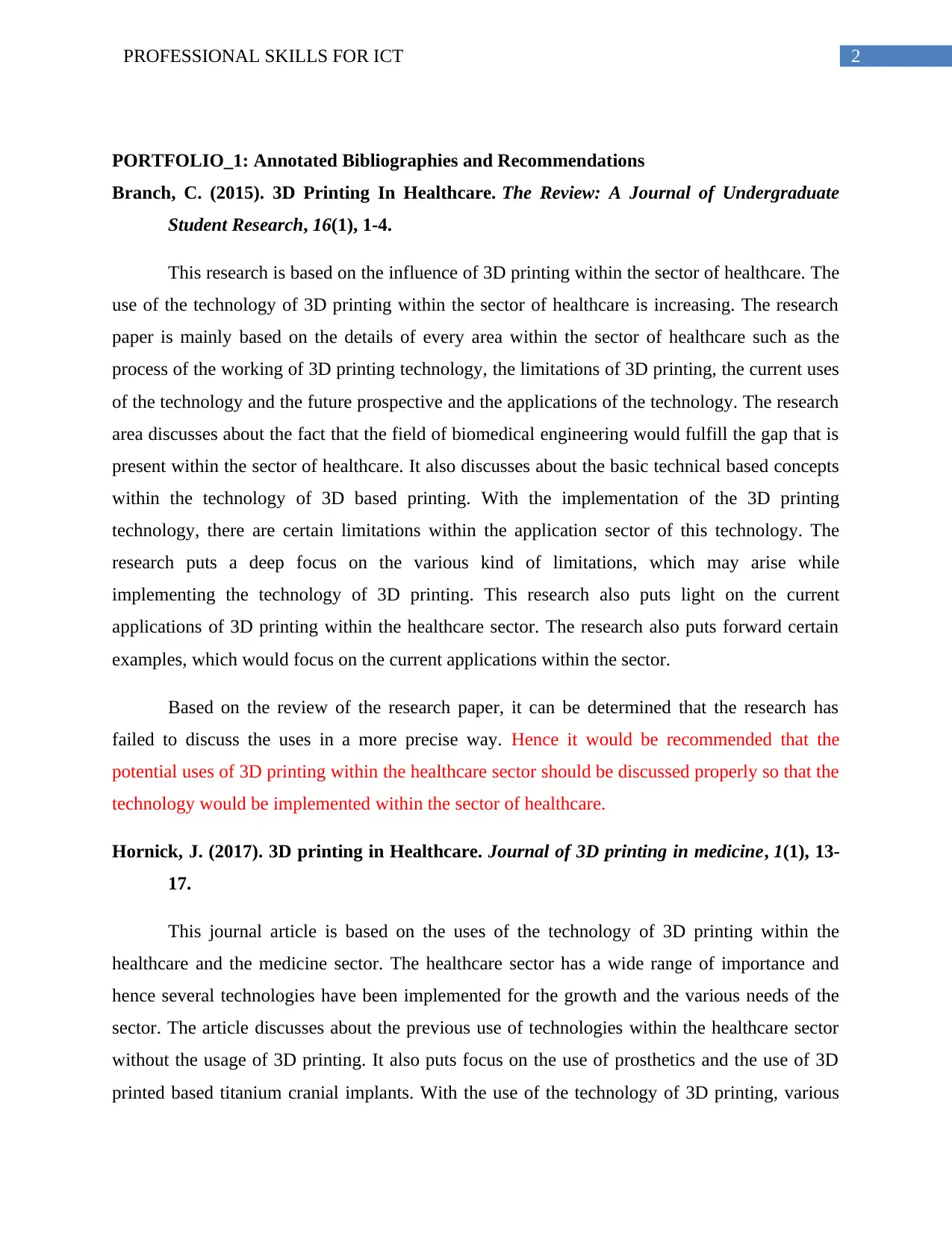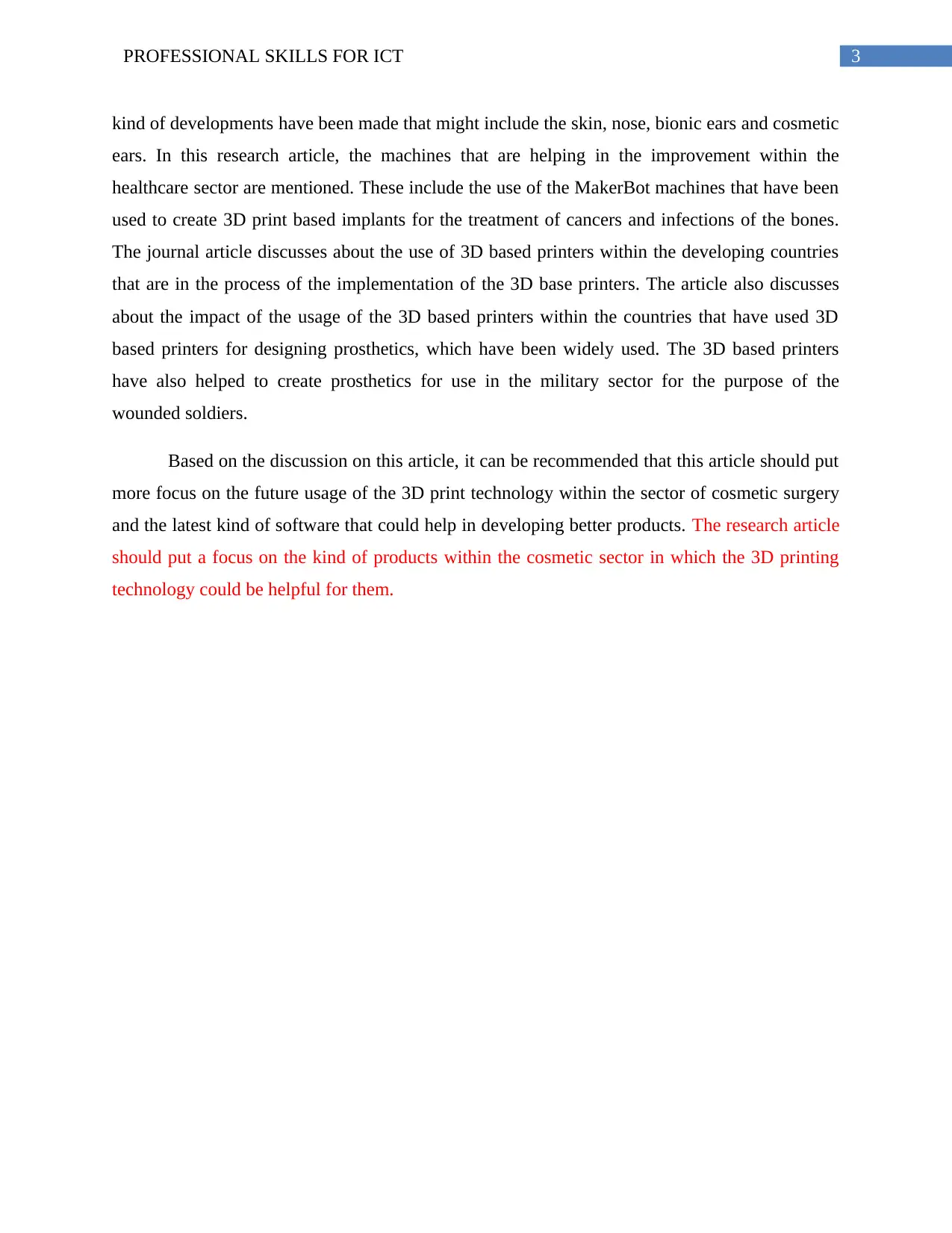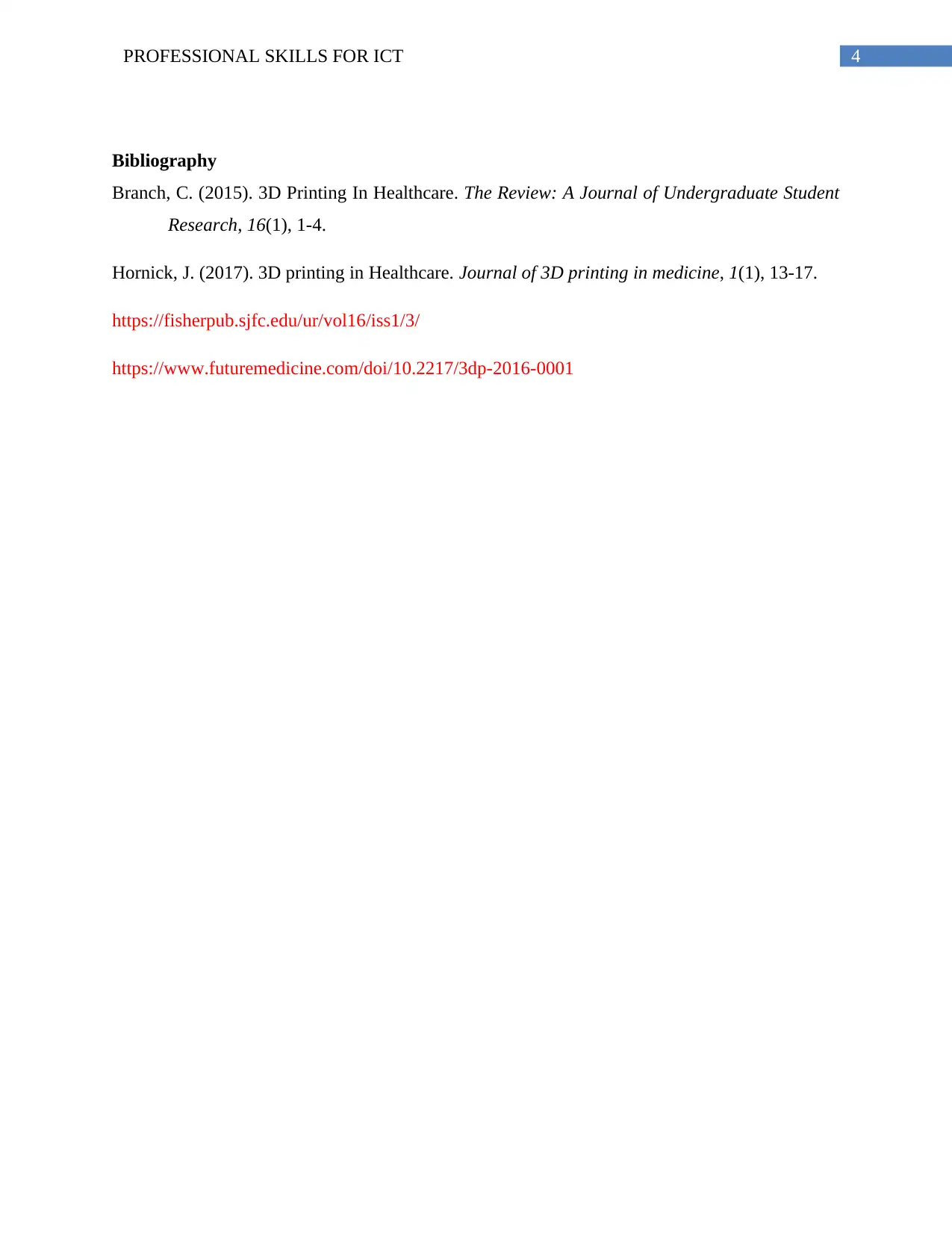Professional Skills for ICT: Portfolio 1 - Bibliography Analysis
VerifiedAdded on 2021/06/14
|5
|771
|27
Project
AI Summary
This project is an annotated bibliography focusing on the application of 3D printing technology within the healthcare sector, specifically addressing ICT professional skills. The assignment includes two research papers. The first paper, by Branch (2015), discusses the influence of 3D printing in healthcare, covering its working process, limitations, current uses, and future prospects. The paper emphasizes the potential of biomedical engineering to fill gaps in healthcare and explores technical concepts. The second article, by Hornick (2017), examines the use of 3D printing in medicine, highlighting its developments such as prosthetics and cranial implants. It mentions the use of MakerBot machines for creating implants and discusses the technology's impact in developing countries and its application in military prosthetics. Recommendations for future research include a greater focus on cosmetic surgery applications and the latest software advancements. The project aims to provide a comprehensive overview of 3D printing's role in healthcare and its implications for ICT professionals.
1 out of 5












![[object Object]](/_next/static/media/star-bottom.7253800d.svg)